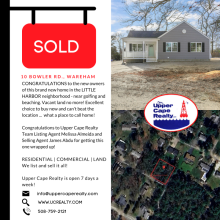Town recommends seawall improvements
Experts say Apponagansett Park could be susceptible to frequent floods in coming years due to a “crumbling seawall” along the town-owned property.
To mitigate that kind of damage, the Town of Dartmouth is hoping to make improvements to the seawall — something many in town said has been in desperate need of repair for some time.
Plans on how to handle the seawall were presented to the Select Board during its Nov. 14 meeting.
The presentation was conducted by Trey Ruthven of Sustainable Coastal Solutions. This comes more than a year after the town was awarded a $107,255 grant from the state to assess alternatives and develop resilient nature-based structural design.
“Saltwater’s actually intruding the park, taking away turf,” he said. “[The wall’s] obviously been crumbling for years.”
The reason for the failing walls? Years of erosion due to rising sea levels for infrastructure that was not built with that change in mind.
According to Ruthven, sea levels have risen around one foot in the past century. This is projected to get even higher in the coming decades, with another foot expected by 2030.
Should the failing seawall remain, it could lead to regular flooding during spring tides and coastal storms. While it is not expected to cause much damage, it is what Ruthven calls “nuisance flooding.”
“It does make moving around the community more difficult,” he said. “And those [storms] are becoming more pronounced and harder to ignore.”
Of course, he said, significant storms are also a high possibility due to climate change.
According to projects submitted to the National Oceanic and Atmospheric Administration, a 10-year storm would result in a surge flooding around half the park. In a 100-year event, the park and nearby town landing would be completely submerged.
It is also estimated that 20 miles of Dartmouth will be at risk of flooding during 100-year storms (6% of town), according to a recent report by the Trustees of Reservations.
Knowing that, along with seeing how bad surges have been following hurricanes in East Coast states such as Florida, board member Heidi Brooks said looking at improving the town seawall is something that needs to be taken seriously.
“We need to wake up and do what we can now,” she said.
Though Apponagansett Park is not “critical infrastructure” for the town, at least compared to other structures such as fire and police stations, Ruthven said less flooding at the park would mean town departments such as Public Works would have to spend less time cleaning things up in that area.
“They’d have to go out and pay for the boat ramp and parking lot,” he said. “That puts an impact on the harbor.”
Select Board member Heidi Brooks noted that even on calmer days, she’s seen tides come pretty close to the bandstand during summer concert performances at the park.
Floods from summer storms last year have also resulted in the cancellation of at least one concert.
“And it’s exactly that seawall area where it's coming from,” Brooks said.
As presented to the board, there are a few ways to bolster the seawall: enhance the beach on the western side of the park and reconstruct and raise the seawall along the north side and close to the landing.
With regard to beach enhancement, Ruthven said the plan is to place a small, low coastal dune about 2.5 feet in height. Having this, he said, would prevent water from cresting in from the west.
While some maintenance would be required, this dune would act as a barrier that naturally erodes over time.
“It would be beneficial to the beach,” Ruthven said.
Preliminary plans for the seawall include rebuilding the structure with stack stone, along with increasing its height in order to reduce waves coming over and further erosion of the park’s soil.
Similarly, the height of the seawall near Dias Landing would also be increased in order to mitigate damage to the parking lot.
The portion along the northern coast would potentially be designed to preserve salt marsh and oyster beds along the wall.
Since this was just the initial public presentation, no vote was taken by the Select Board. Ruthven said the next steps are to continue public outreach and meet with regulatory agencies to look for feedback.
Final plans will be presented at a later date.
Select Board member Shawn McDonald said he was especially keen on getting more public involvement, noting that “there’s a lot of people who use that park.”
Ruthven agreed.
“These small changes have big effects,” he said.













